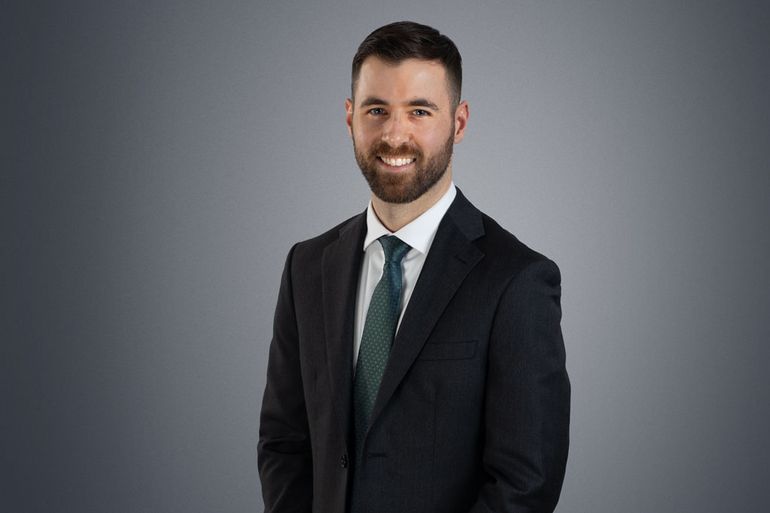News & Insights
Legal Alert

CEQA Reform on the Horizon?
5.29.24
On May 8th, 2024, the Little Hoover Commission released its much-anticipated report, “CEQA: Targeted Reform for California’s Core Environmental Law” putting forth recommendations to improve the functioning of the California Environmental Quality Act, or CEQA, including: 1) strengthen standing requirements; 2) eliminate last-minute “data dumps”; 3) create a broad, simplified exemption for infill housing; 4) provide additional judicial training; 5) encourage courts to show greater deference to the CEQA statute and regulations; and 6) provide clearer parameters and guidance for significance thresholds and mitigation measures.
The Little Hoover Commission (Commission) is an independent, non-partisan state oversight agency created by statute in 1962, whose mission is to promote the characteristics of good governance across California. It primarily carries out this mission by investigating pressing issues that impact government operations statewide, submitting reports recommending reforms to the state Legislature and governor, and supporting legislative proposals that implement those recommendations.
The Commission took up CEQA as a study topic in 2023 to determine how to improve the efficiency and predictability of the landmark environmental law which, since it was signed into law in 1970, has required California government agencies to evaluate and disclose projects’ potential environmental impacts, and mitigate those impacts to the extent feasible. As the scope and scale of CEQA has grown, lead agencies are producing increasingly thorough CEQA analyses that nonetheless add significant time and expense to a project’s review and create opportunities for project opponents to challenge or delay a project’s approval by filing a CEQA lawsuit.
CEQA reform has long been a polemical topic among environmental groups, developers, and government agencies. CEQA reform advocates have long claimed that CEQA’s underlying assumption is that all development is bad for the environment. According to reform advocates, this assumption is no longer valid. The opposite is true, they argue, as California needs to rapidly scale up new construction of renewable energy resources and dense, in-fill housing if it hopes to achieve its ambitious climate and housing goals. The Commission noted as much when it found that “housing projects are the most common single type of project challenged by CEQA litigation.” At the same time, many CEQA proponents maintain that the law remains the most valuable tool to fight against projects that pose health and environmental risks, especially in disadvantaged communities. The Commission’s goal in studying CEQA was to try to find a path forward that would eliminate some of the more burdensome and unproductive aspects of the review process while retaining the law’s bedrock environmental protections.
The CEQA Study
The Commission held five hearings over the course of 2023 and heard testimony from a variety of witnesses, including CEQA practitioners (plaintiff and defense), law professors, representatives of urban and rural local governments, representatives of the building industry, representatives of the carpenters’ union, CEQA consultants, and a retired California State judge. The witnesses presented numerous recommendations including substantive changes, such as limits on CEQA remedies and translation of CEQA documents, simplified exemptions, such as for in-fill housing projects, and procedural modifications concerning litigation. Other ideas were explored, such as the establishment of a statewide CEQA court or the elimination of alternative site analyses. Ultimately, the Commission opted to put forth more limited reform proposals and recommended some of the more dramatic reform ideas for further study, such as the establishment of a statewide CEQA court.
1. Strengthen Standing Requirements
The Commission’s report recognizes that CEQA is susceptible to abuse by parties that bring lawsuits for reasons that do not implicate CEQA’s core purpose – protecting the environment. Currently, a party may bring a lawsuit alleging a CEQA violation if it is “beneficially interested,” even if that interest does not concern protection of the environment. The Commission found that this low standing threshold allows for lawsuits brought “to preclude development opposed by nearby residents, to target competing businesses, or to ensure that certain labor standards are included in a given project.”
The Commission accordingly recommends that the Legislature strengthen CEQA’s standing requirements to reflect those under the analogous National Environmental Policy Act, or NEPA. Under NEPA, a party may only bring suit if it can show that the alleged harms are related to the interests that NEPA was designed to promote. “A plaintiff can sue under NEPA for redress for environmental harms, but not economic harms.” To this end, “[t]he Commission further recommends that the Legislature specifically state in statute that the intent of CEQA is environmental protection and that the law should not be used for suits that do not align with this intent.” By adopting this test for CEQA, the Legislature could seek to ensure that lawsuits brought under the statute align with the environmental goals the statute was designed to promote.
2. Eliminate Last-Minute “Data Dumps”
Robust public participation is one of CEQA’s key features, but project opponents can exploit this open process by submitting large volumes of data to the lead agency even after the public comment period has closed, so long as it is submitted before the close of the last public hearing before a project’s final approval. This “data dump” tactic is intended to cause delay, lay the groundwork for litigation, or create leverage to extract a settlement or change to the project. To encourage efficiency and preserve public participation in the CEQA process, the Commission recommends that the Legislature revise CEQA to limit the submission of comments to the public comment period, with an exception for information that legitimately could not have been known during the public comment period.
3. Create a Broad, Simplified Exemption for Infill Housing
Taking the lead from the Washington State Legislature, which recently voted to exempt housing projects within urban growth boundaries from environmental review, the Commission recommends that the Legislature create a new, simplified exemption for infill housing projects. The exemption would apply to cities and urbanized, non-incorporated areas, and would simply exempt housing projects surrounded on three sides by urban uses without any additional qualifications. The Commission noted that the exemption’s in-fill emphasis should not result in additional urban sprawl or greenfield development. The Commission also acknowledged that associated “policy questions about labor conditions, displacement and gentrification, and public input on the shape of community development… are important issues, but they should not be part of environmental analysis with respect to infill housing.” Instead, the Commission explained that these issues should be addressed through the planning process and specific laws and regulations.
4. Provide Additional Judicial Training
CEQA is a specialized and dynamic area of law subject to frequent legislative tweaks and court rulings. Consequently, judges overseeing CEQA cases oftentimes must rule on complicated questions that turn on highly technical information. To address this issue, judges can currently attend a two-day annual CEQA course through the Judicial Council’s Center for Judicial Education and Research. But in the Commission’s opinion, this is not enough. The Commission recommends that additional funding be provided for the program to extend it to a full week. The Commission expects more training for judges to result in a judiciary that is better prepared to deal with CEQA’s complicated policy implications and issue more consistent rulings.
5. Encourage Courts to Show Greater Deference to the CEQA Statute and Regulations
The Legislature intended for CEQA to be interpreted in a way that does not impose “procedural or substantive requirements beyond those explicitly stated” in the statute or regulations. (Pub. Resources Code § 21083.1.) Nonetheless, the Commission recognizes that the statute and regulations themselves are worded in such a way that leave much room for judicial interpretation. In addition to the final recommendation that the Legislature provide clearer standards in CEQA (discussed below), the Commission recommends that the Legislature strongly reaffirm CEQA’s existing statutory language so that courts defer to the substantive requirements in the statute and CEQA Guidelines.
6. Provide Clearer Parameters and Guidance for Significance Thresholds and Mitigation Measures
The Commission’s final recommendation is for the governor and Legislature to clearly state parameters for thresholds of significance for environmental impacts and adequacy of mitigation measures to deal with those impacts. This recommendation, and the two above, address a recurring theme voiced during the Commission’s hearings – there is too much legal uncertainty in the CEQA process. In the view of many witnesses before the Commission, project proponents that genuinely seek to comply with CEQA should have some certainty as to whether their CEQA analysis will be upheld by a court. One way to address this is for the Legislature to clearly define what constitutes a significant environmental impact and legally adequate mitigation for that impact.
The Commission does not propose specific parameters for the Legislature to incorporate but suggests that the most litigated impacts should be addressed first, which it believes to include aesthetics, Greenhouse Gases, and Vehicle Miles Traveled (VMT). Acknowledging that this will be a very difficult task, the Commission nonetheless stresses its importance, stating that “it is time for state government to devote the time, energy, and resources to clearly define what analysis is sufficient under CEQA and should carry a presumption of adequacy.”
Study Proposals
The Commission’s six recommendations encompass just a fraction of the witness testimony heard by the Commission over the five hearings held in 2023. For various reasons, many of the ideas that came up during this process did not turn into recommendations. However, in addition to the six recommendations discussed above, the Commission proposed that the Legislature further study certain proposals for possible action in the future, including: 1) establishing special courts just for CEQA litigation; 2) providing document translation to ensure California’s diverse communities may participate in the CEQA process; 3) establishing bonding requirements for plaintiffs to discourage bad-faith litigation; 4) requiring the Governor’s Office of Planning and Research to review and study the effects of the VMT analysis and refine its implementation; and 5) locking in scientific models during the review process so that lead agencies do not have to redo an analysis if an updated regulatory standard is released mid-study.
Conclusion
The Commission’s CEQA reform recommendations are aimed at improving the efficiency and predictability of the CEQA process while retaining the law’s bedrock environmental protection goals. The reforms may accomplish this goal, but their effectiveness depends on how they are shaped by the Legislature. That said, the Commission plays an important role in the legislative process: between 2021 and 2022, the Commission made 66 recommendations for policy change, supported 29 bills that would have implemented its recommendations, and saw 12 Commission-supported bills passed by the Legislature and signed by the governor. Consequently, given the flurry of CEQA reform legislation in recent years and the state’s ongoing housing crisis, the Legislature may heed the Commission’s recommendations and chart a course towards meaningful CEQA reform.
Authors
Partner
Associate
RELATED SERVICES
Allen Matkins Leck Gamble Mallory & Natsis LLP. All Rights Reserved.
This publication is made available by Allen Matkins Leck Gamble Mallory & Natsis LLP for educational purposes only to convey general information and a general understanding of the law, not to provide specific legal advice. By using this website you acknowledge there is no attorney client relationship between you and Allen Matkins Leck Gamble Mallory & Natsis LLP. This publication should not be used as a substitute for competent legal advice from a licensed professional attorney applied to your circumstances. Attorney advertising. Prior results do not guarantee a similar outcome. Full Disclaimer


